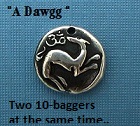Incandescence
Incandescence is light produced from heat. Heat causes a substance to become hot and glow, initially emitting infrared, then red, orange, yellow, and white light as it becomes increasingly hotter. When the temperature of a firework is controlled, the glow of components, such as charcoal, can be manipulated to be the desired color (temperature) at the proper time. Metals, such as aluminum , magnesium , and titanium , burn very brightly and are useful for increasing the temperature of the firework.
Luminescence
Luminescence is light produced using energy sources other than heat. Sometimes luminescence is called 'cold light', because it can occur at room temperature and cooler temperatures. To produce luminescence, energy is absorbed by an electron of an atom or molecule, causing it to become excited, but unstable. When the electron returns to a lower energy state the energy is released in the form of a photon (light). The energy of the photon determines its wavelength or color.
Sometimes the salts needed to produce the desired color are unstable. Barium chloride (green) is unstable at room temperatures, so barium must be combined with a more stable compound (e.g., chlorinated rubber). In this case, the chlorine is released in the heat of the burning of the pyrotechnic composition, to then form barium chloride and produce the green color. Copper chloride (blue), on the other hand, is unstable at high temperatures, so the firework cannot get too hot, yet must be bright enough to be seen.
Quality
Pure colors require pure ingredients. Even trace amounts of sodium impurities (yellow-orange) are sufficient to overpower or alter other colors. Careful formulation is required so that too much smoke or residue doesn't mask the color. With fireworks, as with other things, cost often relates to quality. Skill of the manufacturer and date the firework was produced greatly affect the final display (or lack thereof).
Firework Colorants
| Color | Compound |
| Red | strontium salts, lithium salts lithium carbonate, Li 2 CO 3 = red strontium carbonate, SrCO 3 = bright red |
| Orange | calcium salts calcium chloride, CaCl 2 calcium sulfate, CaSO 4 · xH 2 O, where x = 0,2,3,5 |
| Gold | incandescence of iron (with carbon), charcoal, or lampblack |
| Yellow | sodium compounds sodium nitrate, NaNO 3 cryolite, Na 3 AlF 6 |
| Electric White | white-hot metal, such as magnesium or aluminum barium oxide, BaO |
| Green | barium compounds + chlorine producer barium chloride, BaCl + = bright green |
| Blue | copper compounds + chlorine producer copper acetoarsenite (Paris Green), Cu 3 As 2 O 3 Cu(C 2 H 3 O 2 ) 2 = blue copper (I) chloride, CuCl = turquoise blue |
| Purple | mixture of strontium (red) and copper (blue) compounds |
| Silver | burning aluminum, titanium, or magnesium powder or flakes |



